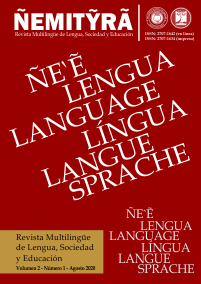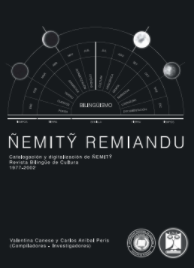Training tutors to promote self-directed learning among university-bound English language students
Palabras clave:
Self, Directed Learning, Tutor Training, English as a Second Language, English Language ProgramsResumen
Instructors who teach in English as Second Language (ESL) programs must balance time allotted to teach academic English with the numerous study skills needed by university-bound English learners. However, for these language learners to close language-learning gaps independently and achieve higher levels of communicative competence, they must assume increasingly greater degrees of autonomy in their own language learning process. Although a high level of self-direction is needed, it is not a characteristic that is common to all students. Through explicit instruction, teachers can scaffold language learners as they implement feasible, concrete actions towards language-learning autonomy. In an ESL program at a southeastern U.S. university, the current qualitative study explored the effects of explicit instruction on self-directed learning (SDL) strategies. Study participants were ESL tutors. After being trained in SDL strategies, these tutors recommended SDL strategies to their tutees in individual tutoring sessions. Findings revealed 4 main categories of SDL assignments recommended by these tutors to their tutees across one semester. Implications from this study suggest that language programs should train teachers and tutors in SDL principles, in the role of SDL in language development, and in strategies for promoting SDL among language learners.
Referencias
Benson, P. (2013). Teaching and researching: Autonomy in language learning. Routledge.
Canale, M., & Swain, M. (1980). Theoretical bases of communicative approaches to second language teaching and testing. Applied Linguistics, 1(1), 1-47.
Cheng, A., & Lee, C. (2018). Factors affecting tertiary English learners’ persistence in the self-directed language learning journey. System, 76, 170-182.
Cook, G. (2000). Language play, language learning. Oxford University Press.
Gan, Z. (2004). Attitudes and strategies as predictors of self‐directed language learning in an EFL context. International Journal of Applied Linguistics, 14(3), 389-411.
Gan, Z., Humphreys, G., & Hamp-Lyons, L. (2004). Understanding successful and unsuccessful EFL students in Chinese universities. Modern Language Journal, 88(2), 229-244.
Graham, J. G. (1987). English language proficiency and the prediction of academic success. TESOL Quarterly, 21(3), 505-521.
Grover, K. S., Miller, M. T., Swearingen, B., & Wood, N. (2014). An examination of the self-directed learning practices of ESL adult language learners. Journal of Adult Education, 43(2), 12-19.
Grow, G. (1991). Teaching learners to be self-directed. Adult Education Quarterly, 41(3), 125-149.
Guskey, T. R. (2014). Planning professional learning. Educational Leadership, 71(8), 10-16.
Hawkins, M. W. (2018). Self-directed learning as related to learning strategies, self-regulation, and autonomy in an English language program: A local application with global implications. Studies in Second Language Learning and Teaching, 8(2), 445-469.
He, Q., & Valcke, M. (2012). Promoting a self-directed interactive model of teaching and learning. Journal of Scientia Paedagogica Experimentalis, 49(2), 3-20.
Karatas, H. H., Alci, B., Yurtseven, N., & Yuksel, H. G. (2015). Prediction of ELT students' academic (language) achievement: Language learning orientation and autonomous learning. International Online Journal of Educational Sciences, 7(1), 160-171.
Khiat, H. (2017). Academic performance and the practice of self-directed learning: The adult student perspective. Journal of Further and Higher Education, 41(1), 44-59.
Knowles, M. S. (1975). Self-directed learning: A guide for learners and teachers. Association Free Press.
Lai, C., Gardner, D., & Law, E. (2013). New to facilitating self-directed learning: the changing perceptions of teachers. Innovation in Language Learning and Teaching, 7(3), 281-294.
Liu, H. J. (2015). Learner autonomy: The role of motivation in foreign language learning. Journal of Language Teaching and Research, 6(6), 1165-1174.
Merriam, S. B. (2001). Andragogy and self‐directed learning: Pillars of adult learning theory. In Merriam, S. B., Ed., The new update on adult learning theory (pp. 3-14). Jossey-Bass.
Merriam, S. B. (2002). Qualitative Research in Practice: Examples for Discussion and Analysis. Jossey-Bass.
Murray, N.L. (2010). Conceptualising the English language needs of first year university students. The International Journal of the First Year in Higher Education, 1(1), 55-64.
Nakata, Y. (2010). Toward a framework for self-regulated language-learning. TESL Canada Journal, 27(2), 1-10.
Oxford, R. L. (2016). Toward a psychology of well-being for language learners: The “EMPATHICS” vision. In P. MacIntyre, T. Gregersen, & S. Mercer (Eds.), Positive psychology in second language acquisition (pp.10-87). Multilingual Matters.
Oxford, R., & Shearin, J. (1994). Language learning motivation: Expanding the theoretical framework. The Modern Language Journal, 78(1), 12-28.
Reinders, H., & Balcikanli, C. (2011). Learning to foster autonomy: The role of teacher education materials. Studies in Self-Access Learning Journal, 2(1), 15-25.
Tse, A. H. (2012). Self-access language learning for Malaysian university students. English Language Teaching, 5(12), 163-167.
Vygotsky, L. S. (1978). Mind in society: The development of higher psychological processes. Harvard University Press.
Yarahmadzehi, N., & Bazleh, E. E. (2012). The effects of applying Betts' autonomous learner model on Iranian students. Studies in Self-Access Learning Journal, 3(3), 310-321.










